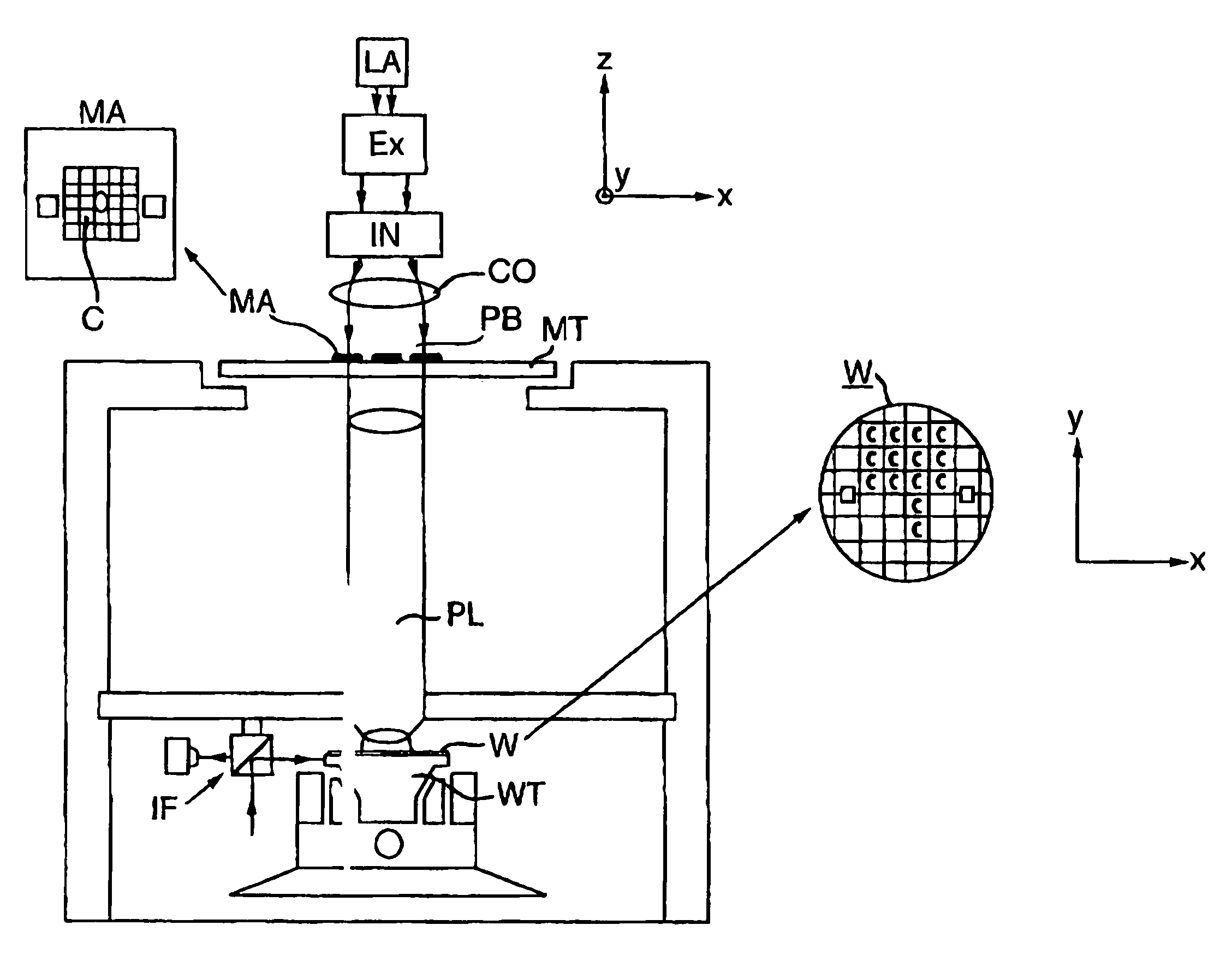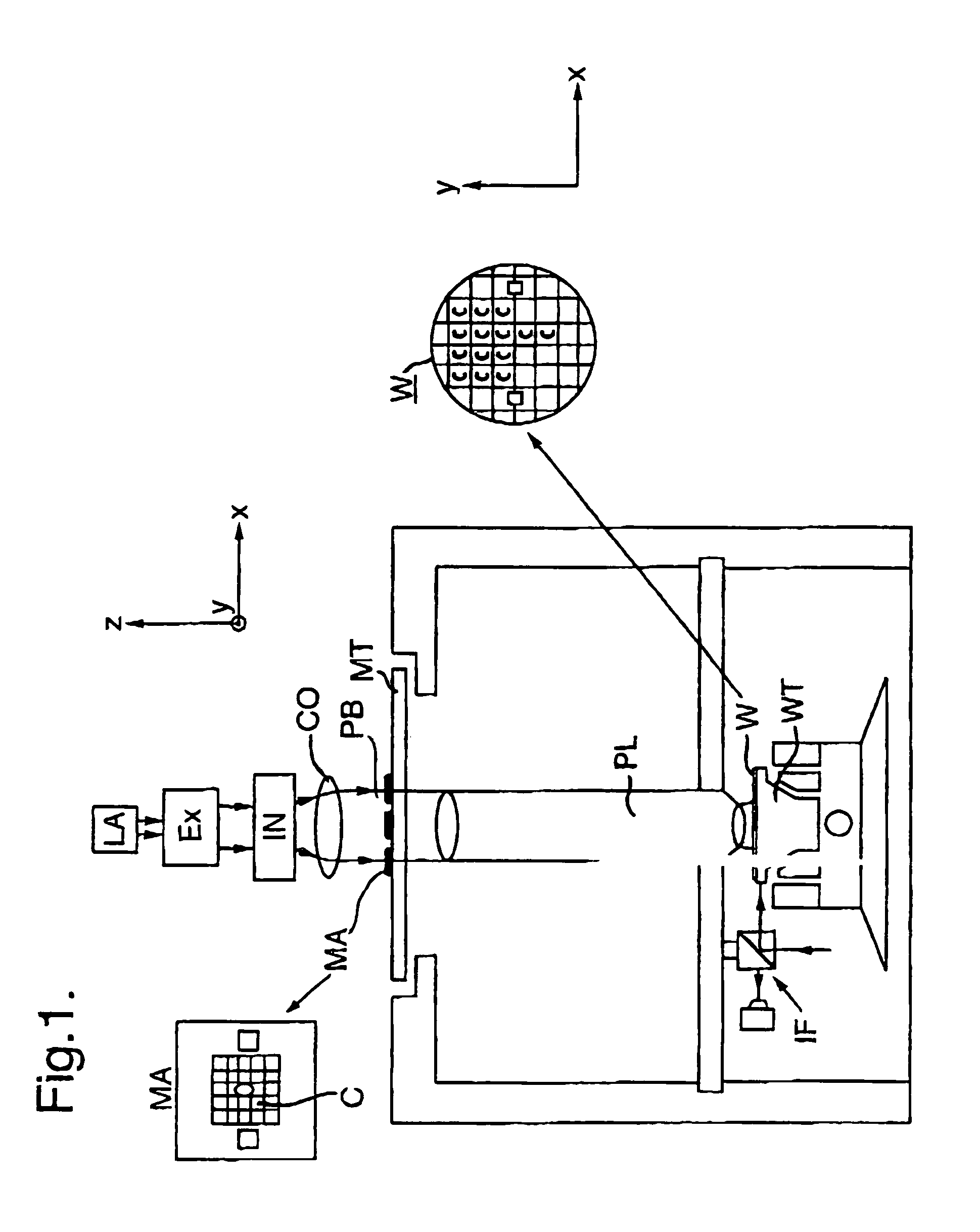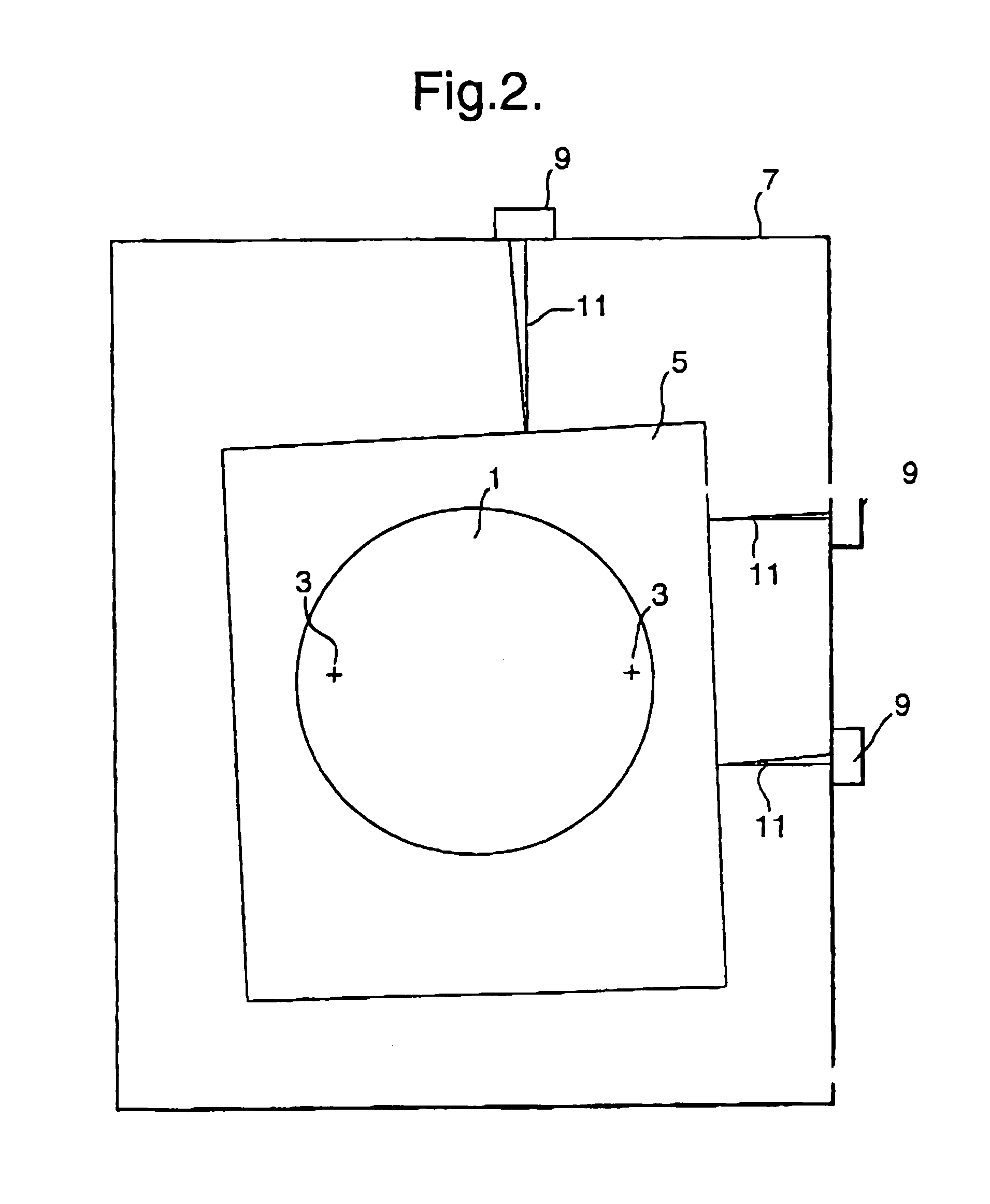Object positioning method for a lithographic projection apparatus
- Summary
- Abstract
- Description
- Claims
- Application Information
AI Technical Summary
Benefits of technology
Problems solved by technology
Method used
Image
Examples
embodiment 1
[0056]FIG. 1 schematically depicts a lithographic projection apparatus according to the invention. The apparatus comprises:[0057]a radiation system Ex, IN, CO for supplying a projection beam PB of radiation, such as ultraviolet light (e.g. at a wavelength of 365 nm, 248 nm, 193 nm or 157 nm), EUV, X-rays, electrons or ions;[0058]a first object table (mask table) MT provided with a mask holder for holding a mask MA (e.g. a reticle);[0059]a second object table (substrate table) WT provided with a substrate holder for holding a substrate W (e.g. a resist-coated silicon wafer);[0060]a projection system PL (e.g. a lens or catadioptric system, a mirror group or an array of field deflectors) for imaging an irradiated portion of the mask MA onto a target portion C (die) of the substrate W. As here depicted, the apparatus comprises refractive components. However, it may alternatively comprise one or more reflective components.
[0061]Alternatively, the apparatus may employ another kind of patt...
PUM
 Login to View More
Login to View More Abstract
Description
Claims
Application Information
 Login to View More
Login to View More - R&D
- Intellectual Property
- Life Sciences
- Materials
- Tech Scout
- Unparalleled Data Quality
- Higher Quality Content
- 60% Fewer Hallucinations
Browse by: Latest US Patents, China's latest patents, Technical Efficacy Thesaurus, Application Domain, Technology Topic, Popular Technical Reports.
© 2025 PatSnap. All rights reserved.Legal|Privacy policy|Modern Slavery Act Transparency Statement|Sitemap|About US| Contact US: help@patsnap.com



